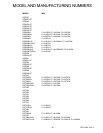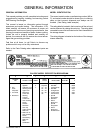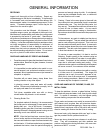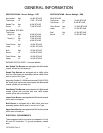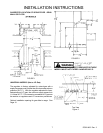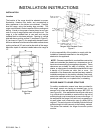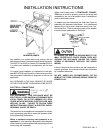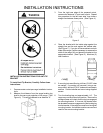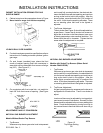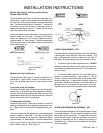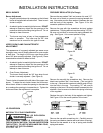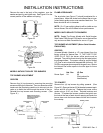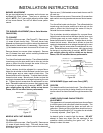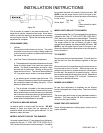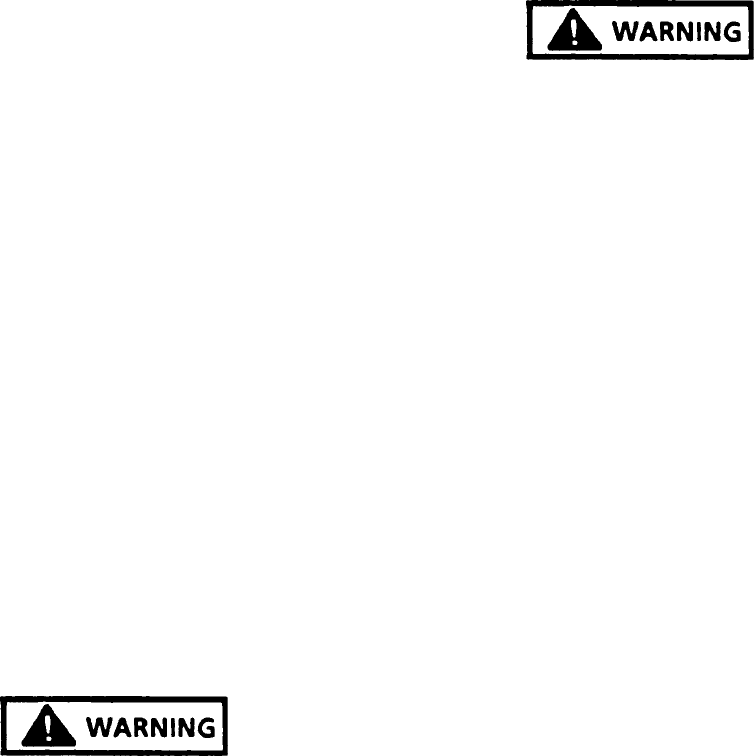
INSTALLATION INSTRUCTIONS
RC231002 Rev. 3 10
CONNECTING TO GAS SUPPLY LINE
Access to connection is behind bottom storage drawer.
The pressure regulator has a 1/2" female pipe thread. It is
recommended that a 1/2" close nipple, a union and shut-
off valve, be assembled into the regulator. This places the
assembly for each connection to the gas supply and access
to the shut-off valve as illustrated in Figure 1.
The gas supply pipe to the range should be 3/4" rigid pipe
then reduced to 1/2" pipe at the pressure regulator. If a long
run of fuel is required, a larger size pipe may be required.
With the liquified petroleum (LP) gases, the size of the
piping or tubing can be 1/2" minimum. LP gas suppliers
usually determine the size and material used on the
system. We do not recommend that flexible connectors be
used in connecting our appliance to the gas supply, unless
American Gas Association approved. Poorly designed
connectors can be a source of gas leak. Even when AGA
approved flexible connectors are used the customer should
be cautioned against kinking or damaging the connector
when moving the range for cleaning or any reason. This
could cause a gas leak.
A shut-off valve should be installed in the line supplying
gas to the range. Check local building codes and utility
requirements. (See Figure 1 for details.)
A suitable pipe thread sealing material should be used,
which is approved for use with LP gases.
Caloric ranges are designed for easy connection between
the supply line and the inlet fitting. However, all strains
must be removed from the supply and fuel lines so the
range will be level and in line.
Use two (2) wrenches when connecting to the regulator.
FIRE OR EXPLOSION HAZARD - LEAK TEST
COMPONENTS AFTER CONNECTION.
THE REGULATOR IS DIE CAST AND WILL CRACK,
RESULTING IN A GAS LEAKAGE AND POSSIBLE FIRE
OR EXPLOSION, IF YOU MAKE THE CONNECTION
TOO TIGHT.
The stack on the regulator must be in vertical position. BE
SURE to use pipe dope to seal connections.
Be sure the shut-off valve is open between the inlet nipple
and gas valve.
TEST FOR GAS LEAKS
After the final gas connection has been made, all the top
burner valves should be closed and the gas supply turned
on. All connections in the gas supply line and in the range
should be tested with soap suds for any leaks. If a leak is
present, bubbles will appear. The leak should be corrected
by tightening the joint, or unscrewing it completely and
applying additional dope. Any connections which may
have been disturbed should be tested for leaks.
A LIGHTED MATCH OR FLAME SHOULD NEVER BE
USED WHEN TESTING FOR LEAKS. ALL FITTINGS
AND CONNECTIONS HAVE BEEN TIGHTENED AND
TESTED AT THE FACTORY. IF A LEAK IS DETECTED,
TIGHTEN THE FITTING, DO NOT USE PIPE DOPE ON
FACTORY FITTINGS.
The gas supply pipe to the range should be 3/4" rigid pipe
then reduced to 1/2" pipe at the pressure regulator. If a long
run of fuel line is required, a larger size pipe may be
required. With liquefied petroleum (LP) gases, the size of
the piping or tubing can be 1/2" minimum. LP gas suppliers
usually determine the size and material used on the
system. We do not recommend that flexible connectors be
used in connecting our appliance to the gas supply, unless
American Gas Association approved. Poorly designed
connectors can be a source of gas leak. Even when AGA
approved flexible connectors are used the customer should
be cautioned against kinking or damaging the connector
when moving the range for cleaning or any reason. This
could cause a gas leak.
A shut-off valve should be installed in the line supplying
gas to the range. Check local building codes and utility
requirements.
A suitable pipe thread sealing material should be used,
which is approved for use with LP gases.
Caloric ranges are designed for easy connection between
the supply line and the inlet fitting. However, all strains
must be removed from the supply and fuel lines so the
range will be level and in line.
FIRE OR EXPLOSION
HAZARD



